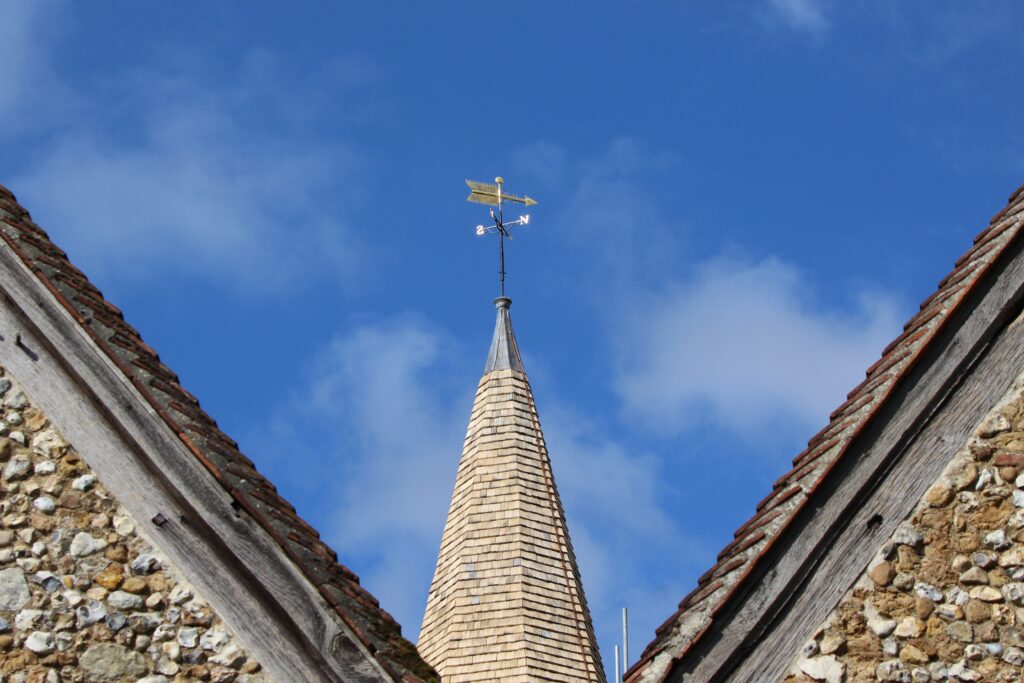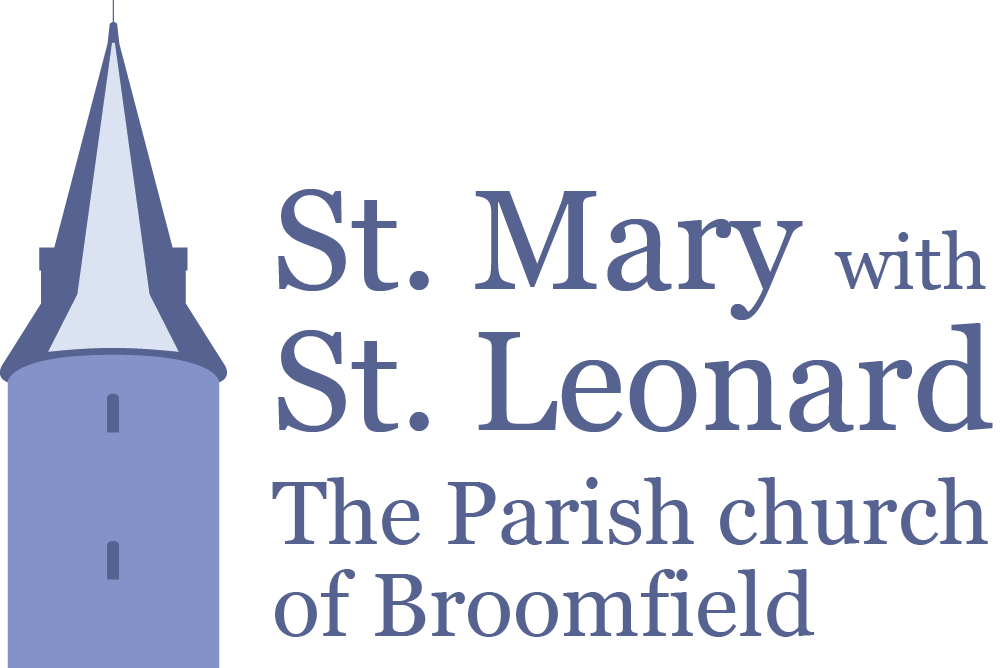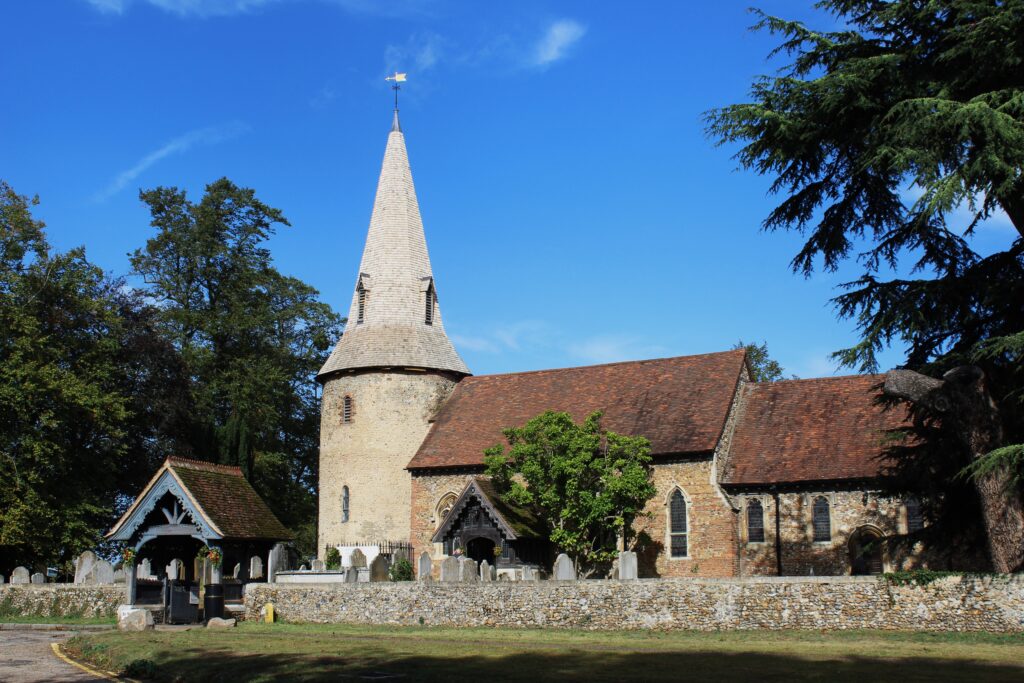
In November 2021 a Heritage Lottery Fund grant and fundraising efforts enabled a start to be made in planning the protection of the Rosemary Rutherford fresco through repair and restoration work on the church spire and tower.
St Mary’s church is a Grade II* listed building dating from the end of the 11th century.
This is a very rare and beautiful building.
The tower was added to the church early in the 12th century and is one of just six round towers in Essex.
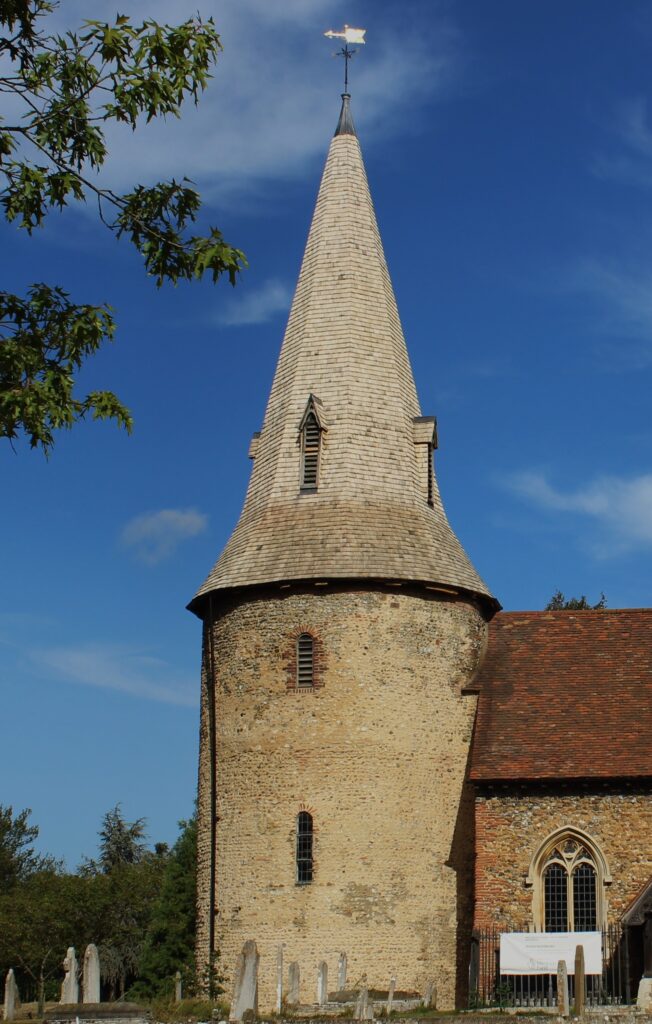
With a 4½m (15ft) diameter, two-stories in height, it has a conical roof rising to an octagonal, wood-clad spire. On the ground floor are three round-headed Norman windows with jambs and head of Roman brick. The upper storey has similar windows but these have been repaired with 17th century bricks. The spire has four gabled lights and it dates from the 15th century. Two of our six bells date from 1580 and 1613.
more about the bells
At the Project Rutherford launch in April 2022, our architect, Penny Clements, outlined the work to be undertaken on the tower and spire, involving exposing the ancient timbers in the spire. This would present a rare opportunity to examine them closely and also to determine the spire’s age.
The initial and most urgent work was for the removal of the cedarwood shingle cladding of the spire – badly damaged by weathering and holed by woodpeckers – and its total replacement with resistant oak shakes.
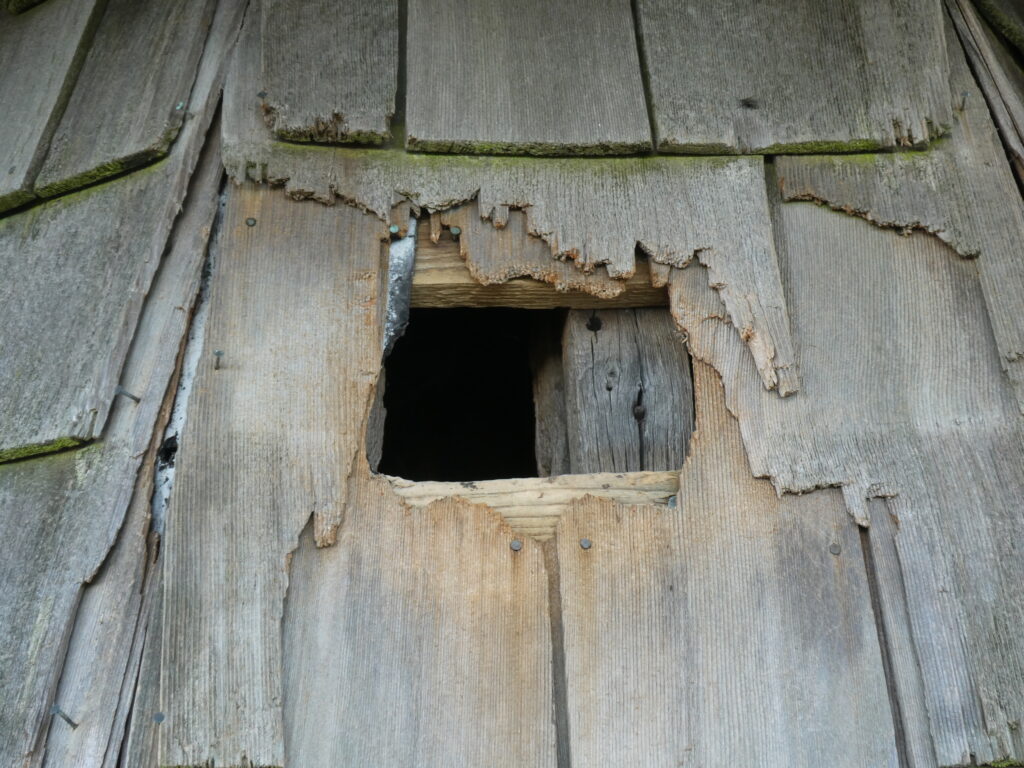
The interior of the spire, the bells and the tower had suffered from the effects of water penetration and various animal infestations.
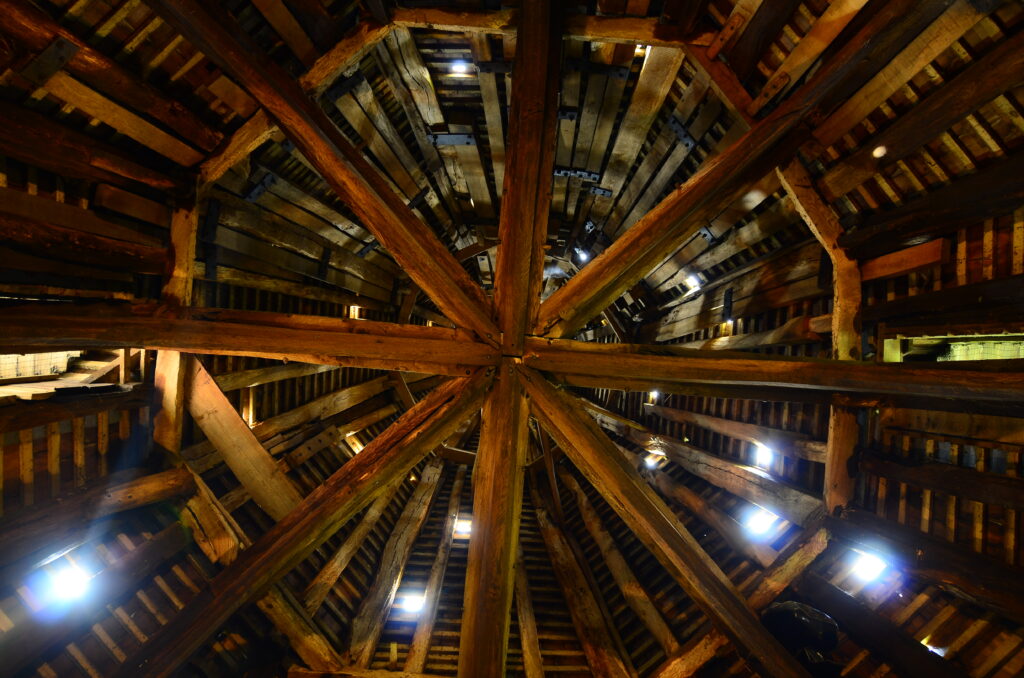
The building repair part of the project started on June 13th 2022, after some delay by bad weather and covid. The Bakers of Danbury restoration team then worked through the intense summer heatwave.
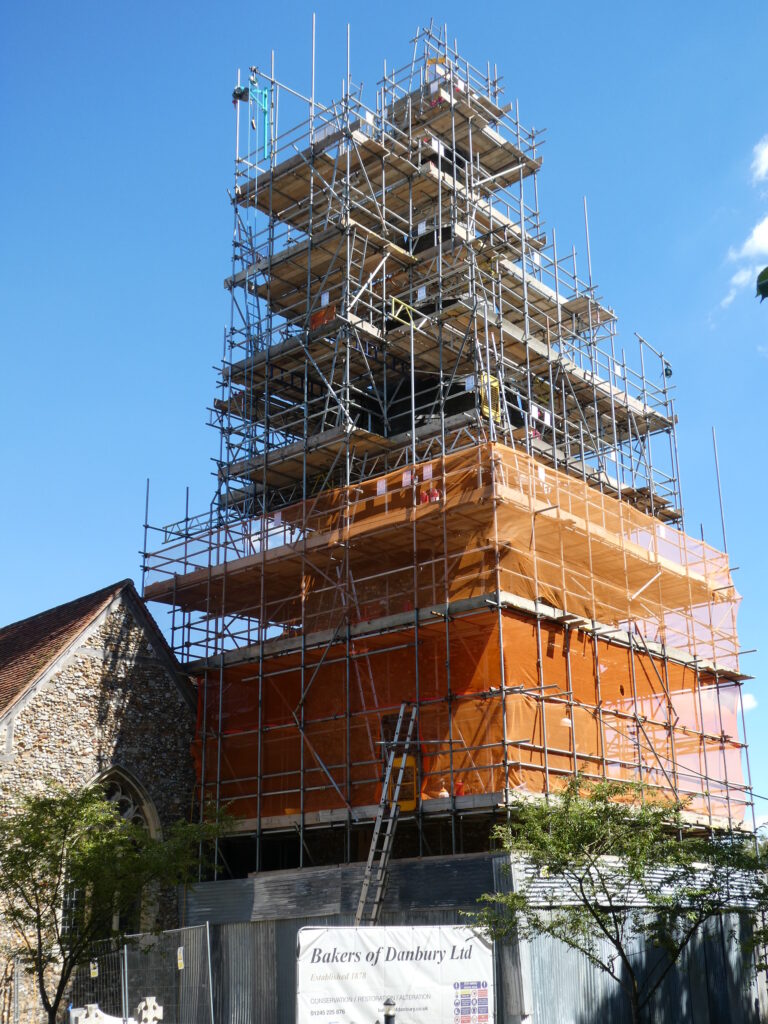
Pic – tower and spire in scaffolding
A dendrochronology expert visited the tower in July and took samples of the wooden timbers while another expert made detailed drawings of the structure. Their initial thoughts were that the spire is probably late 15th century.

Our local geologists, Ian and Ros Mercer, took this rare opportunity of viewing the tower fabric in detail from the scaffolding stages, subsequently making a report on the stones and their significance.
The Stones of the Tower Wall
The renovation of the spire took a setback towards the end of July 2022. Having stripped off the old shingles, it was discovered that part of the timber structure was in a very poor condition and would need a lot of extra work to restore it to a safe and stable condition sufficient to last another generation or two. There were two problems: some of the wood itself was in a poor state, but there were also indications of poor structural integrity.

One problem was that the repairs following the bomb damage in 1943 were less than perfect in terms of the timber used and its structural integrity within the spire framework. Some of these problems had not been remedied when re-shingling took place in 1973. Extra work was always going to be a possibility given the age of the spire, but it was only when the outer layer of shingles was removed that these problems were revealed in their entirety.
A contingency amount was built into the original budget, but the amount was not nearly enough to meet the extra costs. Emergency funding was then sought from various grant making bodies. It was quite a blow to realise we were now facing the need to find an extra £85,000 to restore the integrity of the spire. We are extremely grateful to The Round Tower Churches for a very swift response of a £5,000 grant, Friends of Essex Churches for a hefty £30,000 grant, and £5,000 each from FSJ Charities Trust, the Ian M Foulerton Charitable Trust and the Congregational and General Charitable Trust.
After some delays for measuring up and ordering new timbers and brackets to replace those which have not passed the test of time, work on the spire repairs restarted at the end of October 2022. The next steps were to complete the timber repairs then fit the firrings to the spire, carry out the louvre repairs – and re-shake!
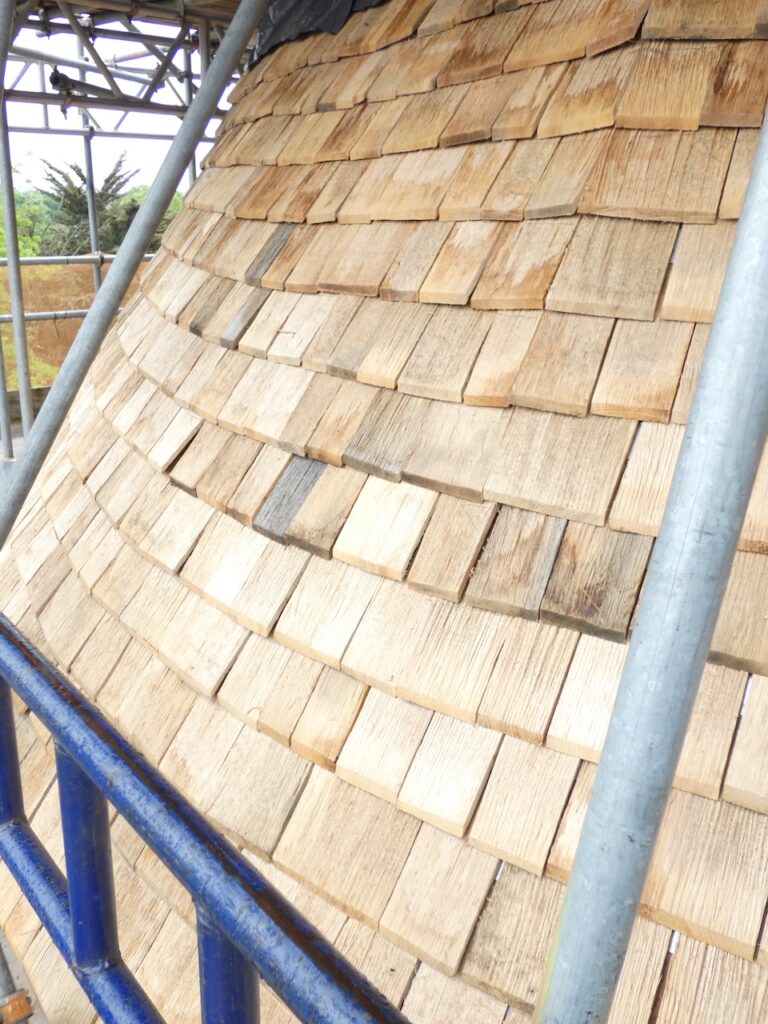
The new oak shakes in place (Alan Coday)
We continued sending off a multitude of applications to try to raise sufficient funds to finance the extra work. £50,000 had been raised so far but we were still well short of the final estimated cost.
Then there were problems related to the scaffolding installation. The carpenters were about to the work on the final largest timber when this ongoing problem came to a head, the axe metaphorically fell, and the men were ordered off the site. The scaffolding did not meet the exact design originally planned; although the designer stated it was safe (thus the men had been using it), it was not to his precise plan and therefore he would not sign it off. This lack of paperwork affected Bakers’ insurance, and so they could no longer work using the existing scaffolding.
Once the battens and shakes had been completely removed, the scaffolding provides a degree of stability and protection for the spire structure, so there was no question of being able to remove and replace it. Another scaffold designer was found who agreed to plan suitable modifications that would remedy the situation and allow work to resume.
The New Year of 2023 dawned and still the scaffolding did not change. Life is full of complications and so are scaffolding designs. A number of queries arose with the proposed new design so everything remained static over the festive season. However, following site inspection on 9th January a new proposal was provided, involving partial deconstruction of the current scaffolding once temporary bracing of the spire was in situ. Scaffolding to the new design was then erected, allowing Bakers to resume the timber repairs and fitting the new firrings, prior to the shakes being fitted at last. It was decided to remove the spire scaffold to the eaves and then install the revised scaffolding. The process required the spire to be braced and this was also carried out by Bakers.
The works on site recommenced in early March 2023. A side effect of the new design, however, meant that the last area of tower re-pointing could not be completed until the scaffold was removed! In turn this meant the finishing date for the external works was further delayed, with the next steps being to repair the last structural timber frame, carry on with fitting firrings to the spire and then to add the oak shakes and repair the louvres. Every effort has been taken to use the most durable tiles so as to avoid the necessity of replacement in any foreseeable future. Oak shakes were used that had been riven by hand to ensure the optimum alignment to growth rings, with no machine-sawn exposed grain, and with stainless-steel backing plates strategically placed to prevent future woodpecker damage. Applying these to our octagonal, part conical, tapered spire proved a challenge as each shake was hand crafted to fit. This took a while.
By mid-May, the restoration of the tower and spire, the building phase of Project Rutherford that had caused us so many headaches, was drawing to completion. Witnessed by members of the PCC and Project Rutherford volunteers, an ascending team comprised Rev’d Carolyn, Penny Clements our architect and project manager, Alan Coday our NLHF evaluator, Aiden Fothergill, Bakers’ project manager and Neil Wiffen, community representative.
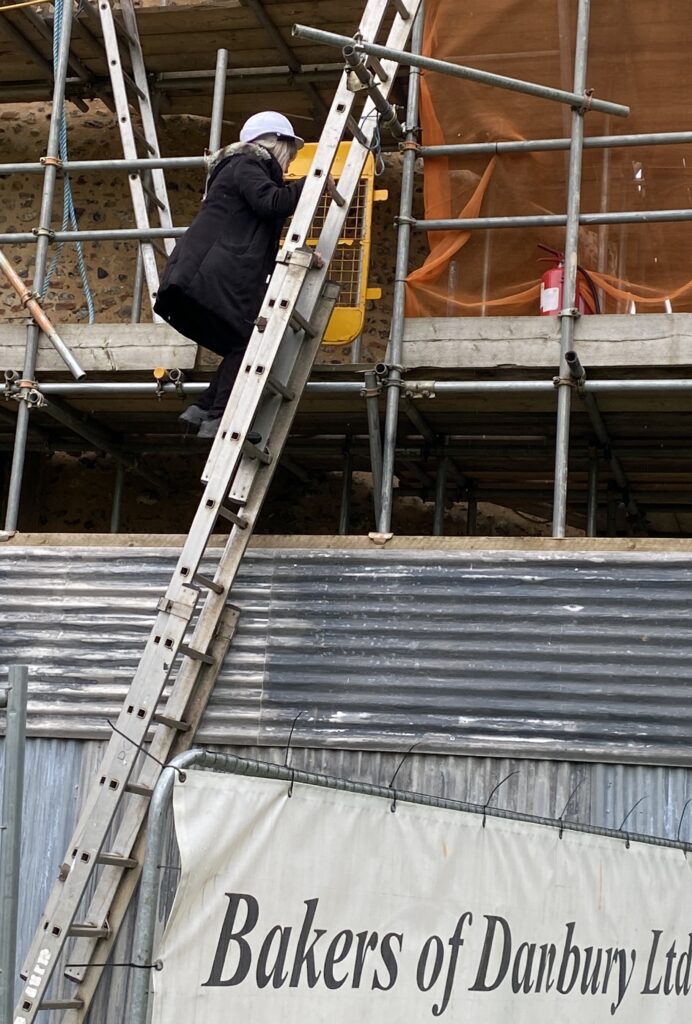
The vicar ascends…
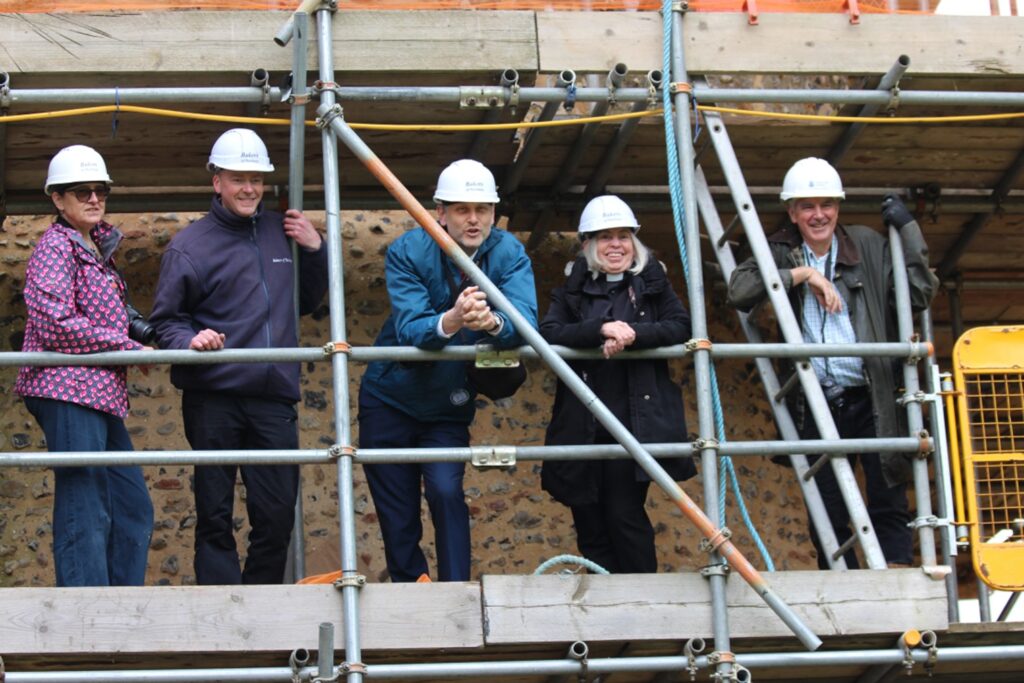
Taking in the view
As they celebrated by popping a bottle and singing shingles and shakes for the photographer, the watching party did likewise and took numerous photos to record this important stage of the project.

Good Luck was extended to Aiden Fothergill as he was leaving Bakers. Acknowledging this had not been the easiest of projects, Aiden thanked us for our patience and positivity with all the challenges and wished us well for the future.
Disappointingly but perhaps more realistically given the amount of work still to be carried out, the completion date for the spire and the exterior of the tower was moved forward to August 2023
Importantly at this stage, the Heritage Fund reconsidered their initial refusal to increase our grant and agreed that they would cover the remaining amount for the extra work necessitated by the state of the underlying timbers. That was the most welcome news!.
As with other elements of this project, little goes according to plan. When the lead covering the support for the wind-vane was removed, the underlying wood was found to be rotten, offering no support for our re-gilded ironwork. In many ways this discovery was a blessing as clearly the weight of the new vane could have proved problematic should it have been dislodged by a strong wind. New timbers were fashioned and put in place. By the end of August the building arm of Project Rutherford was nearing completion, the scaffolding had been removed leaving only a small area of re-pointing to finish the work in early September 2023.
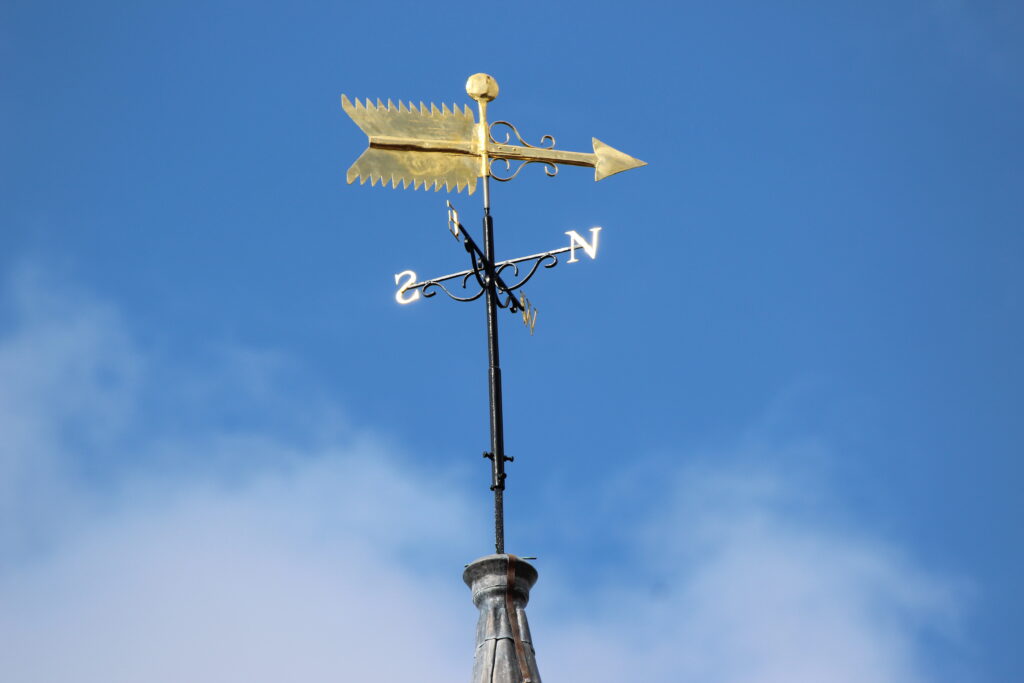
The re-gilded weathervane stands proud, a gleaming summit to the spire shining out and visible throughout the village, reminding folk of their parish church nearby.
